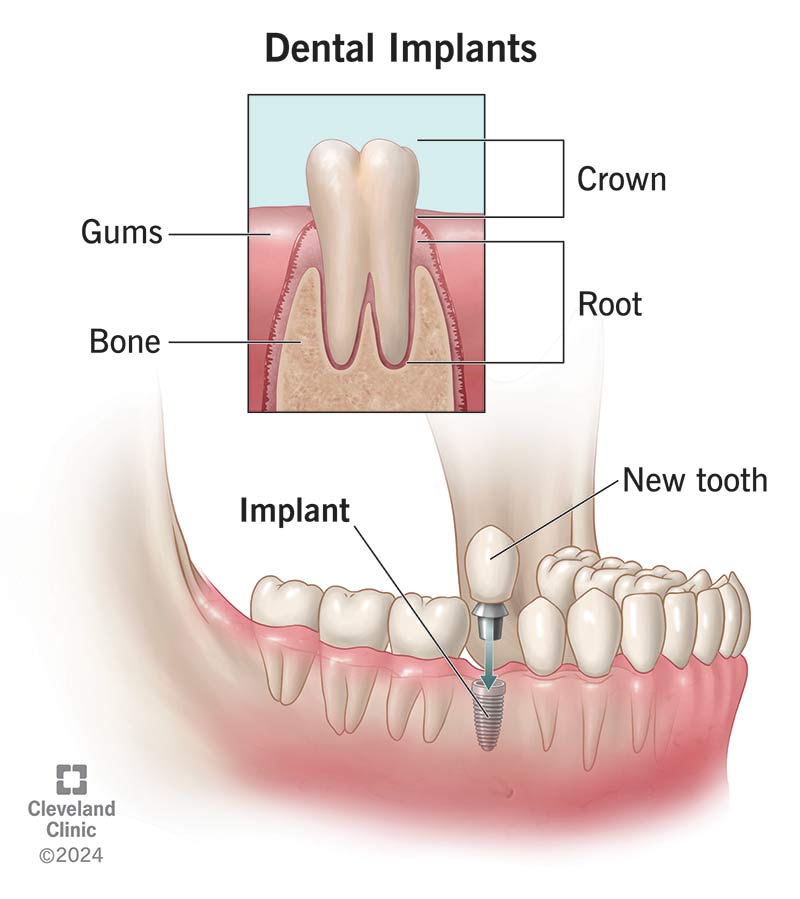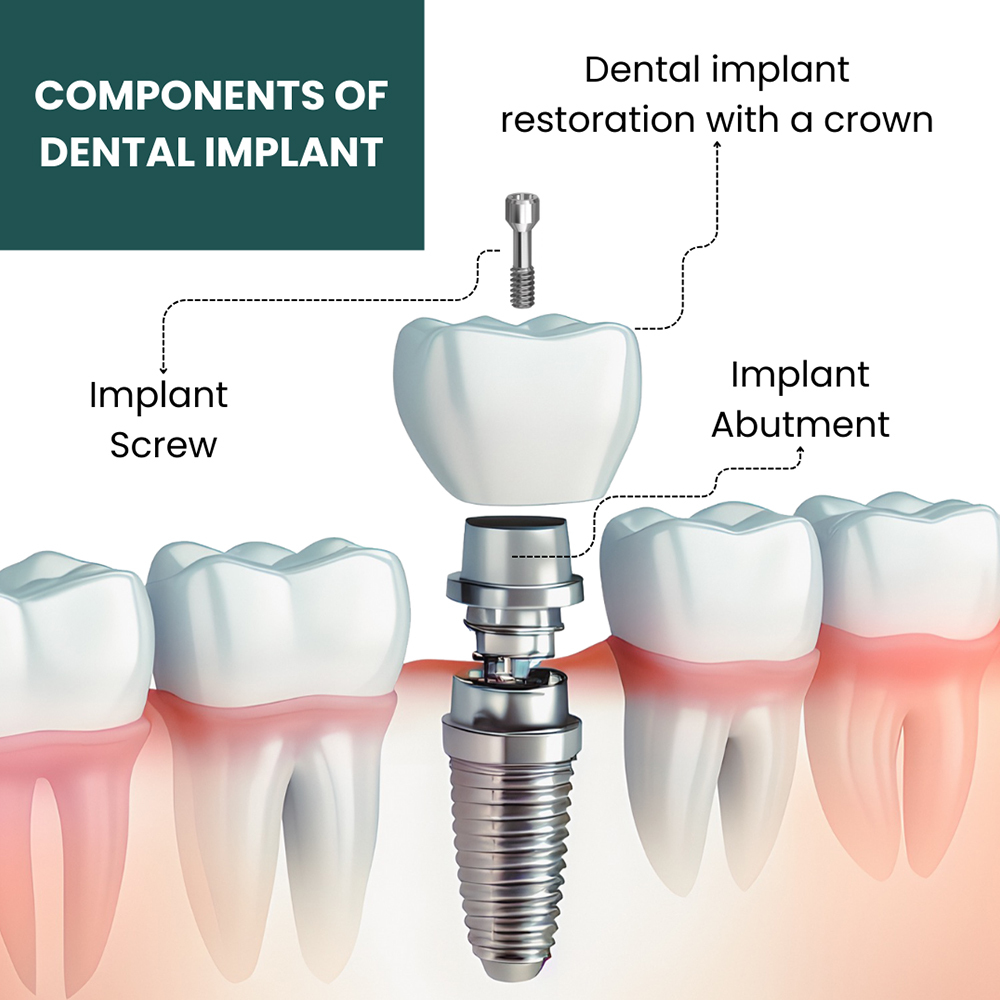Some Of Dental Implants
Some Of Dental Implants
Blog Article
Some Known Factual Statements About Dental Implants
Table of ContentsDental Implants Can Be Fun For EveryoneThe Of Dental ImplantsSome Of Dental ImplantsNot known Factual Statements About Dental Implants
are clinical devices surgically implanted into the jaw to restore a person's capacity to chew or their appearance. They provide support for artificial (fake) teeth, such as crowns, bridges, or dentures. When a tooth is lost because of injury or disease, an individual can experience complications such as rapid bone loss, faulty speech, or changes to chewing patterns that result in pain.
Framework of The Dental Implant System choosing dental implants, talk with your dental service provider regarding the potential benefits and risks, and whether you are a prospect for the procedure. Things to think about: Your total health is a vital aspect in establishing whether you are an excellent candidate for oral implants, the length of time it will certainly take to heal, and how much time the dental implant might remain in location.
Cigarette smoking may influence the healing process and reduce the long-term success of the implant. The recovery process for the implant body may take a number of months or longer, throughout which time you generally have a momentary joint in location of the tooth. the dental implant procedure: Very carefully follow the dental hygiene directions offered to you by your oral copyright.
A Biased View of Dental Implants
Implant failing can lead to the requirement for one more operation to repair or change the implant system. Brings back the ability to eat Restores cosmetic appearance Helps maintain the jawbone from diminishing because of bone loss Protects the health and wellness of the bordering bone and gum tissues Aids keep adjacent (neighboring) teeth secure Improves quality of life Damage to bordering all-natural teeth during dental implant placement Injury to the surrounding cells during surgical procedure, such as sinus opening Injury during surgical treatment (for instance, fracture of bordering jawbone) Insufficient function, such as seeming like the teeth do not attack with each other typically A feeling that the tooth is loose or twisting in area resulting from an abutment screw loosening Implant body failure (looseness of the implant body) as a result of systemic infection, which might be most likely in individuals with unchecked diabetics issues because of local infection in bone and periodontals sustaining the dental implant body due to postponed recovery, which may be more probable in individuals who smoke Difficulty cleansing the periodontals around the implant, causing inadequate oral health Without treatment gum illness Post-surgical feeling numb because of nerve impingement or damages Constantly inform healthcare providers and imaging specialists that you have dental implants prior to any kind of magnetic resonance imaging (MRI) or x-ray procedures.
FDA is not knowledgeable about any type of damaging occasions reported for MRI or x-ray treatments with dental implants. Dental implants systems are normally made of materials that comply with worldwide agreement criteria of the International Company for Standardization (ISO) or ASTM International. These standards have information of what makes a risk-free material.
Other products such as gold alloys, cobalt-based alloys, titanium alloys, or ceramic materials are in some cases utilized. The security accounts of these products are well-known. Oral dental implant systems are assessed according to global consensus criteria. Biocompatibility testing, to reveal that physical call with the gadget does not cause complications like irritability or allergic response, is component of the evaluation that aids ensure the products in the dental implant system are safe and do not cause damaging results when implanted in people.

What Does Dental Implants Mean?
Some people are not qualified for oral implant surgery. It is for dental doctors to operate on people with: intense illnessuncontrollable metabolic diseasebone or soft cells condition or infectionIf these concerns are fixed, a person can have the surgical procedure. Dental Implants. In, oral doctors avoid operating individuals with: If individuals with any of the above undergo oral implant surgical procedure, there is a higher threat of the dental implant failing
Some individuals have a jawbone abnormality that prevents adequate bone for a dental implant YOURURL.com from establishing. The cosmetic surgeon will certainly then utilize a bone or bone substitute to repair and develop up the location.
Dental implant surgical procedure is a personalized procedure. It's not the very same for everyone. The complying with gives a general review of what you can anticipate your dental professional, oral doctor, periodontist or prosthodontist to do: Position the implant operatively. Give you time to recover. Connect the post and last crown, bridge or denture.
Next off, your surgeon will meticulously place the oral implant into your jaw. Lastly, your surgeon will rearrange your periodontals and close the incision with stitches. If your implant is near the front of your mouth, your dental practitioner will make a temporary click resources tooth for you to wear until you recover. That way, you will not have a gap in your smile while you recover.
Dental Implants - Questions
Your service provider can inform you what to expect in your situation. During the recovery phase, your jawbone needs to fuse to the dental implant. This process, called osseointegration, is critical for security and long-lasting success. This procedure can take anywhere from three to 9 months. In many cases, it may take longer.
As soon as your implant heals, your dentist can connect the joint (little port blog post) and your final restoration (crown, bridge or denture). This typically takes about one hour to finish and may need a 2nd small surgery. You shouldn't really feel any kind of discomfort during your oral implant treatment due to the fact that your company will utilize drug to numb your periodontals.
Report this page